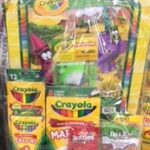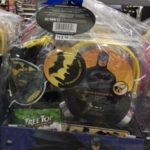Easter is the second biggest candy holiday in the United States, as 87% of Americans will buy or cr eate an Easter basket. Total annual spending on Easter candy has been $2.1 billion with over 120 million pounds of Easter candy purchased. Over 70% of the candy purchased is chocolate and 16 billion jelly beans are sold.
eate an Easter basket. Total annual spending on Easter candy has been $2.1 billion with over 120 million pounds of Easter candy purchased. Over 70% of the candy purchased is chocolate and 16 billion jelly beans are sold.
All this candy adds up to a lot of sugar.
What is in an Easter basket? According to the National Confectioners Association (NCA) the most popular items include:
- Easter candy/chocolate is 89%
- Non-edible items such as stuffed animals, markers, crayons, books, etc.is 79%
- Dark Chocolate or chocolate with added fruits and nuts (added benefits) is 46%
- Snack items like granola bars or dried fruit is in 44%
- Mints and gum is 35%
Are you wondering about those marshmallow chicks (Peeps) you see everywhere? It’s reported that 55% of Americans love them with 42% liking them fresh and 10% liking them stale. Yet, they are just made of sugar and food coloring.
With all that candy being sold, maybe it is time to rethink the Easter basket. Especially, since the USDA Dietary Guidelines recommends no more than 10% of our calories per day should come from added sugars. These recommendations are for everyone from children to senior adults. Maybe, it’s time we cut back on the amount of candy we buy.
What other options are there to put in the basket besides candy? Did you know 11% of families sur veyed by NCA don’t add any candy to their baskets? Some suggestions to fill a basket include:
veyed by NCA don’t add any candy to their baskets? Some suggestions to fill a basket include:
- Stuffed animals
- Markers, crayons, sidewalk chalk, water paints
- Reading or coloring books
- Outside play equipment – jump ropes, balls, noodles for the pool, Frisbees, swim goggles
- Bubbles and big wands for making bubbles

- Family board games
- New reusable water bottle
- Passes to do fun activities
- Religious items
One or two small candy items are fine. Healthy food items could include snack packs of nuts, dried fruits, small boxes of raisins, and trail mix.
Do some fun activities together as a family to celebrate the holiday, such as coloring eggs or having an egg hunt. These are popular activities, as 79% of parents/grandparents dye Easter eggs and 71% have a hunt or attend a hunt for either candy-filled eggs or real eggs.
Author: Pat Brinkman, Family and Consumer Sciences Extension Educator, Ohio State University Extension
Reviewer: Shannon Carter, Family and Consumer Sciences Extension Educator, Ohio State University Extension
References:
National Confectioners Association. (2018). Easter Central. Available at https://www.candyusa.com/life-candy/easter-central/
National Confectioners Association. (2018). Easter Central Insights. Available at https://www.candyusa.com/life-candy/easter-central/sweet-easter-insights/
Statistic Brain Research Institute (2018). Easter Statistics. Available at https://www.statisticbrain.com/easter-statistics/
USDA Dietary Guidelines. (2015). 2015-2020 Dietary Guidelines for Americans. Available at https://health.gov/dietaryguidelines/2015/guidelines/

